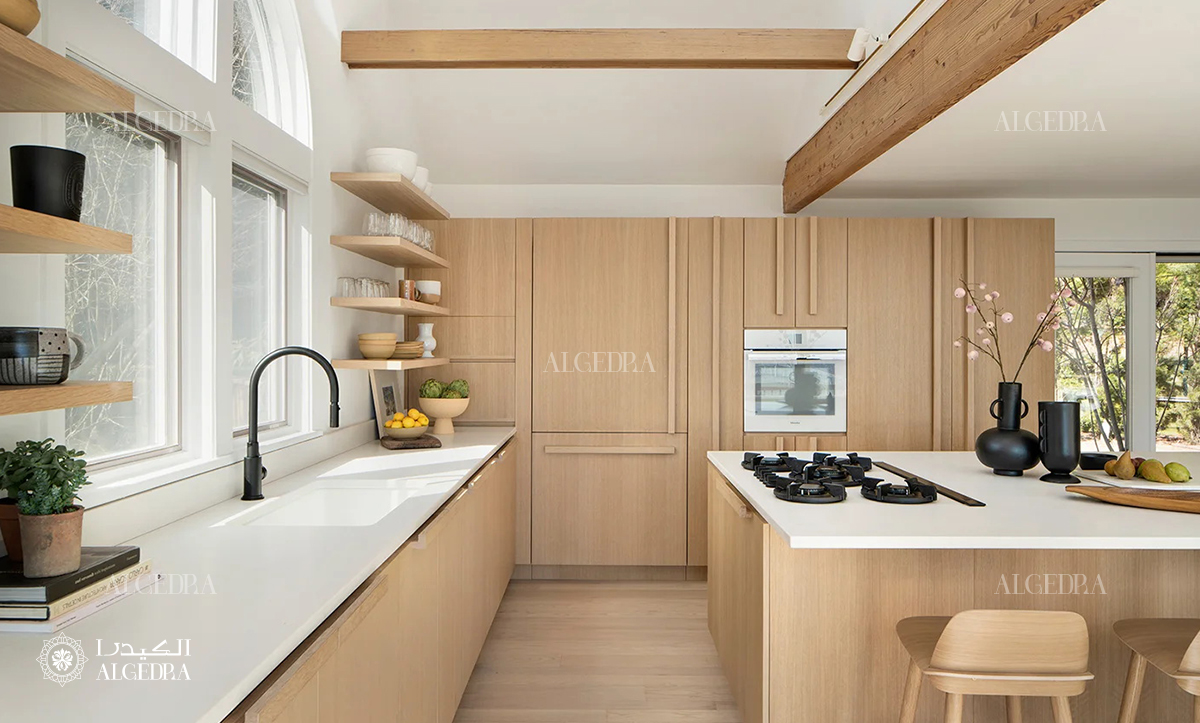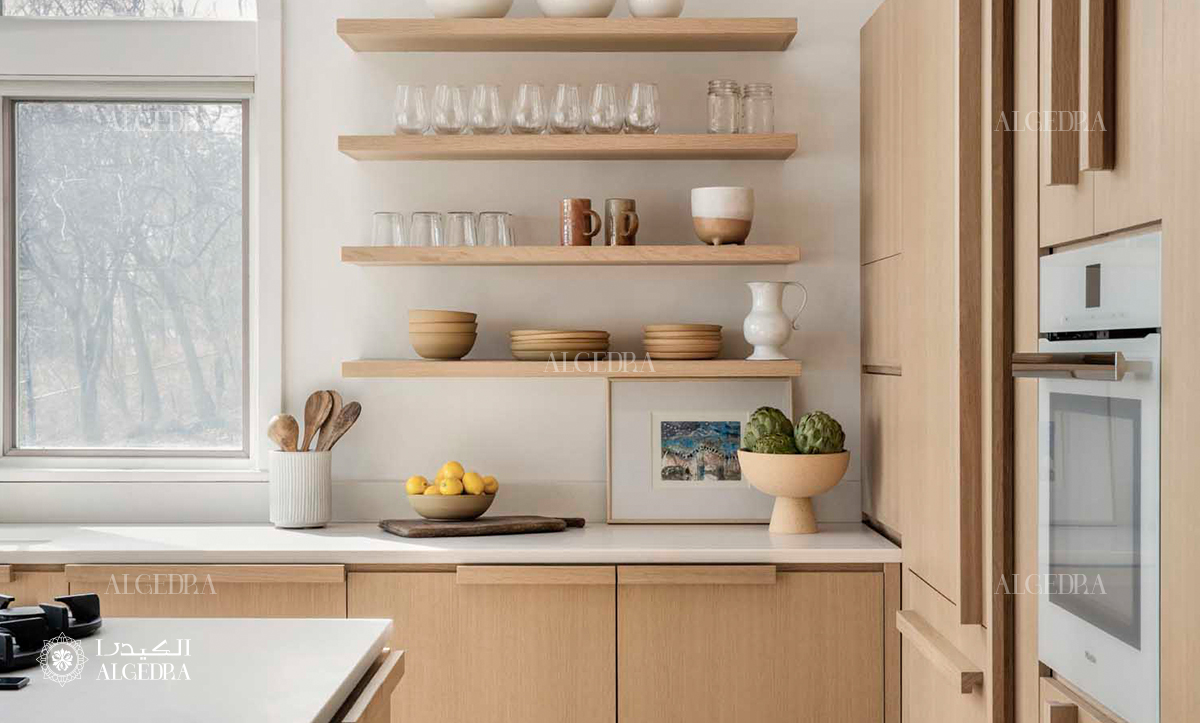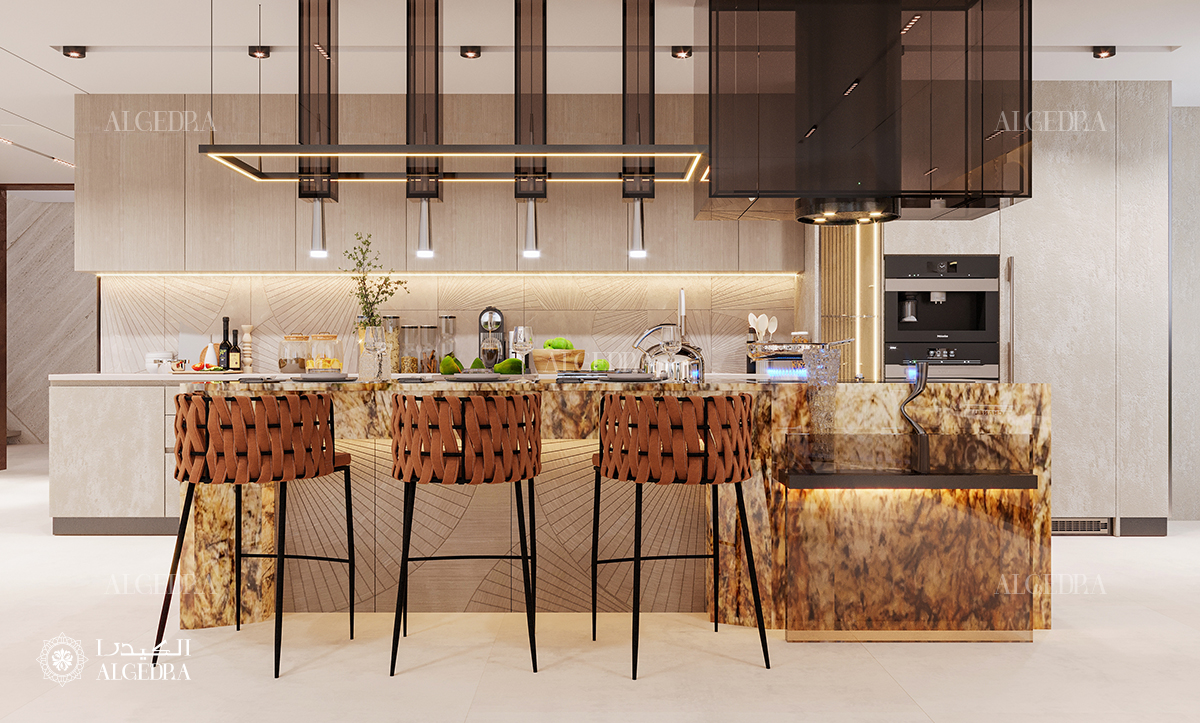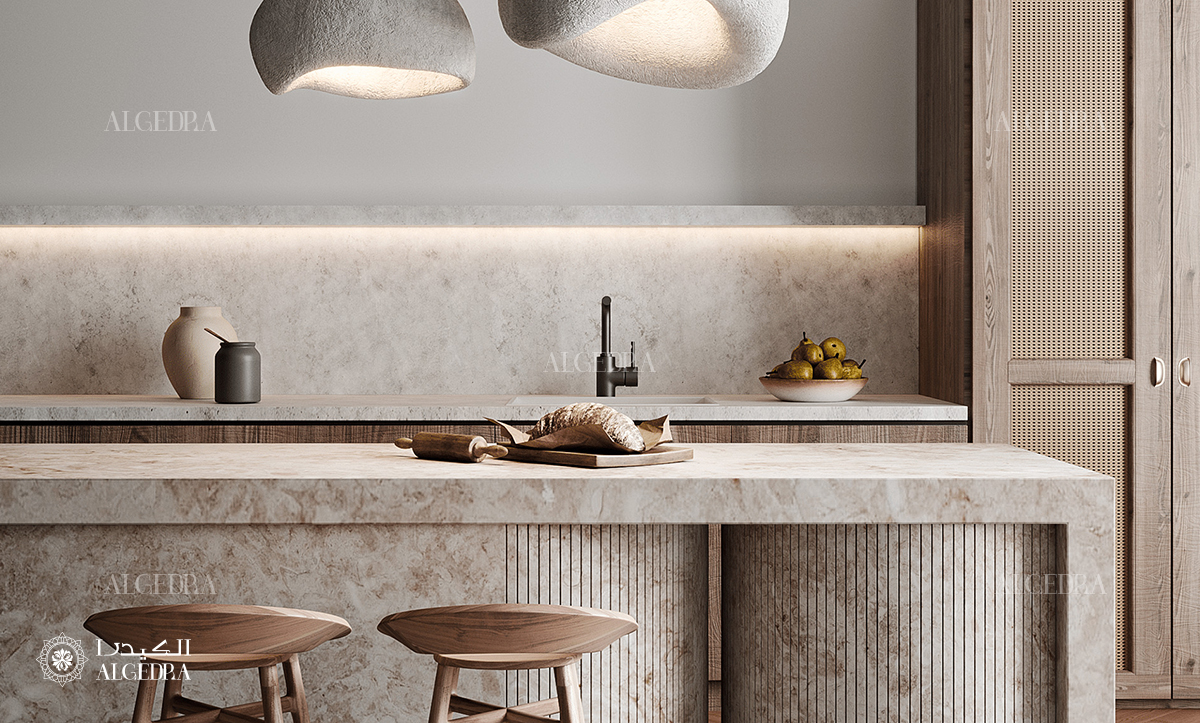Being a fresh take on interior design, "Japandi" has been gaining popularity in recent years. The design is minimalist and uncluttered, taking cues from both Japanese and Nordic aesthetics.
Natural elements like wood and stone are prominent in Japandi design, as are muted tones and an emphasis on efficiency and simplicity. Plants brought indoors are a frequent way to soften the urban environment.
The use of subdued lighting, warm materials, and open floor plans are all hallmarks of the Japandi design, which aims to create a soothing environment at home.
Japandi style is a breath of new air in the domain of interior design; it is a novel approach that manages to be both useful and appealing.
Let us look at this design style in the kitchen. Here are a few tips to apply at your home.
Characteristics of Japandi Style Kitchen Design
Japandi-style kitchens are simple and functional, emphasizing clean lines, natural materials, and straightforwardness. Following are some important characteristics of a Japandi-style kitchen:
1- Natural materials: Wood, stone, and bamboo are prominently featured in Japandi design. These materials are frequently utilized in the cabinetry, floors, and worktops of a kitchen designed in the Japandi style.

2- Simple color palette: A muted color scheme with tones of white, gray, black, and beige is typical of Japandi design. This makes the kitchen ambiance peaceful and tranquil.
3- Clean lines: Kitchens designed in the Japandi style contain few decorations and clean, straight lines. As a result, there is a streamlined, uncomplicated appearance that is both attractive and functional.
4- Functional layout: Kitchens made in the Japandi style are designed to be practical. All necessary tools and appliances are conveniently located, and the arrangement is intended to make the most effective use of available space.

5- Cozy touches: Despite its minimalist nature, Japandi style places a premium on making a home seem cozy and welcoming. You can do this by using low lighting, plants, and textured furniture like woven baskets and rugs made from natural fibers.
Ultimately, a kitchen designed in the Japandi style is a beautiful and practical combination of Japanese and Scandinavian design concepts.
Use of materials
The aesthetic and practical value of organic materials is emphasized in Japandi kitchen design. Some typical components of a Japandi kitchen are listed below.
1- Wood: Cabinets, floors, and worktops are all common places to find wood in Japandi style. Oak, ash, and birch are popular options as their light tones mesh well with the serene minimalism of Japandi design.

2- Stone: Marble, granite, and quartz are all popular choices for natural stone countertops in modern Japanese kitchens. These materials are not only practical, but also lend a touch of sophistication to the room.
3- Bamboo: Bamboo is a renewable and eco-friendly resource that is frequently utilized in Japandi-style kitchens for flooring, cabinetry, and even cooking utensils. It can be used as a sustainable substitute for conventional hardwoods.

4- Ceramic: Japanese homeowners frequently choose ceramic tiles for their backsplashes because of the variety of colors and patterns they offer. They are available in a wide array of hues and designs, providing ample opportunity for personal expression even within the constraints of a streamlined aesthetic.
5- Metal: Japanese kitchens typically feature metals like stainless steel and brass in their equipment and fixtures. They give the room a sense of warmth and texture while maintaining a contemporary aesthetic.

The overall goal of Japandi kitchen design is to create a peaceful and welcoming atmosphere via the use of sustainable, aesthetically pleasing, and naturally occurring materials.
Tips for your Japandi Style Kitchen
Here are some tips for creating a Japandi kitchen design:
1- Emphasize simplicity: Japandi design is all about simplicity and minimalism. To create a Japandi kitchen, focus on clean lines, uncluttered spaces, and functional design.
2- Use natural materials: Japandi style emphasizes the use of natural materials such as wood, stone, and bamboo. Incorporate these materials into your kitchen design for a warm and organic feel.

3- Keep a muted color palette: Japandi design uses a muted color palette, with shades of white, gray, black, and beige. Stick to these neutral colors for a calming and cohesive look.
4- Add texture: Japandi design is not just about minimalism - it also incorporates texture and tactile elements. Incorporate textured materials such as woven baskets, natural-fiber rugs, and ceramic tiles to add interest and depth to your kitchen design.
5- Focus on functionality: Japandi design emphasizes practicality and functionality. Make sure your kitchen is designed to be efficient and easy to use, with a layout that makes sense for your cooking style.

6- Add natural elements: Indoor plants, such as succulents and bonsai trees, are a key element of Japandi design. Add some greenery to your kitchen to create a calming and relaxing atmosphere.
7- Embrace asymmetry: Japandi design embraces asymmetry and imperfection. Consider incorporating asymmetrical elements into your kitchen design, such as a single pendant light instead of a row of identical lights.
By following these tips, you can create a Japandi kitchen design that is both functional and beautiful, with a focus on simplicity, natural materials, and tactile elements.